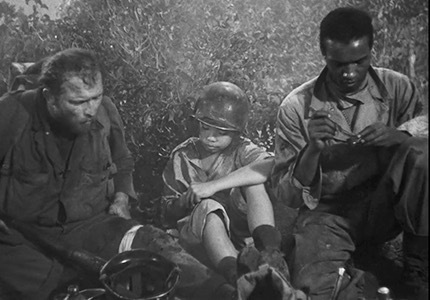
It’s typical for war films from any country or region that the film would paint “their” side as heroic and selfless. The issue here is that war films present a highly prejudiced worldview and convey that perspective to an audience unaware that it is being sold a political idea or re-rendering of past events. European films have been, at least in my experience, more successful in presenting war without one-sided heroism or an inadvertent propagandist message. The reason these European films are able to escape such conventions of American cinema is largely due to the fact that these films do not adopt a romantic “us and them” philosophy, opting instead to depict the horrors of war from the perspective of the civilian. The Mirror (1975), Come And See (1985), Coup De Grace (1976), Bullet In The Head (1990), Vukovar (1994), Hope and Glory (1987), and Forbidden Games (1952) all give accounts of both sides of a conflict from the perspective of a third party civilian observer, thusly negating the problematic terrain of a film like Saving Private Ryan (1998). American films rarely deal with civilian participants of war. And when they do they often adopt the heavy-handed polemics of John Cromwell’s Since You Went Away (1944).
The real anti-thesis to the standard American war film exists in the work of a single filmmaker, Samuel Fuller. Consider Fuller’s third feature The Steel Helmet (1951). Unlike other films of its time, The Steel Helmet has an energy and realism that can only be accounted for by examining Fuller’s role in the American Infantry of WWII. Similarly, Fuller’s background in journalism allows him the recklessness to address such subjects as racial discrimination and Japanese Internment. Both subjects are breached naturally, and do much to humanize different characters, thusly permitting them the same development and cruciality to the plot that the White American characters have. In 1951 this was unprecedented, but Fuller went even further by humanizing the “enemy” of the film’s narrative, drawing distinct parallels between the views on warfare between the American and North Korean soldiers. In Fuller’s film, a hero is defined by his ability to simply survive, an idea that may appear to have minimal repercussions but in actuality is so broad that Fuller’s film, along with his subsequent war films, pays tribute to all who have died in a conflict.
With Verboten! (1959) and The Big Red One (1980) Fuller refines this approach by adding to the formula a sense of the histrionic and the romantic. The use of archival footage of concentration camps in Verboten! pre-dates Stanley Kramer’s Judgment at Nuremburg (1961), and serves not as a device to reinforce the inhumanity of Nazis, but rather to juxtapose the American treatment of German civilians as they occupy West Germany. In this way Fuller conveys his concept that in war everyone is a victim and everyone is a killer, that responsibility permeates all involved. This philosophy mirrors that of Fuller’s counterparts in Europe without structuring the film from a civilian perspective.
